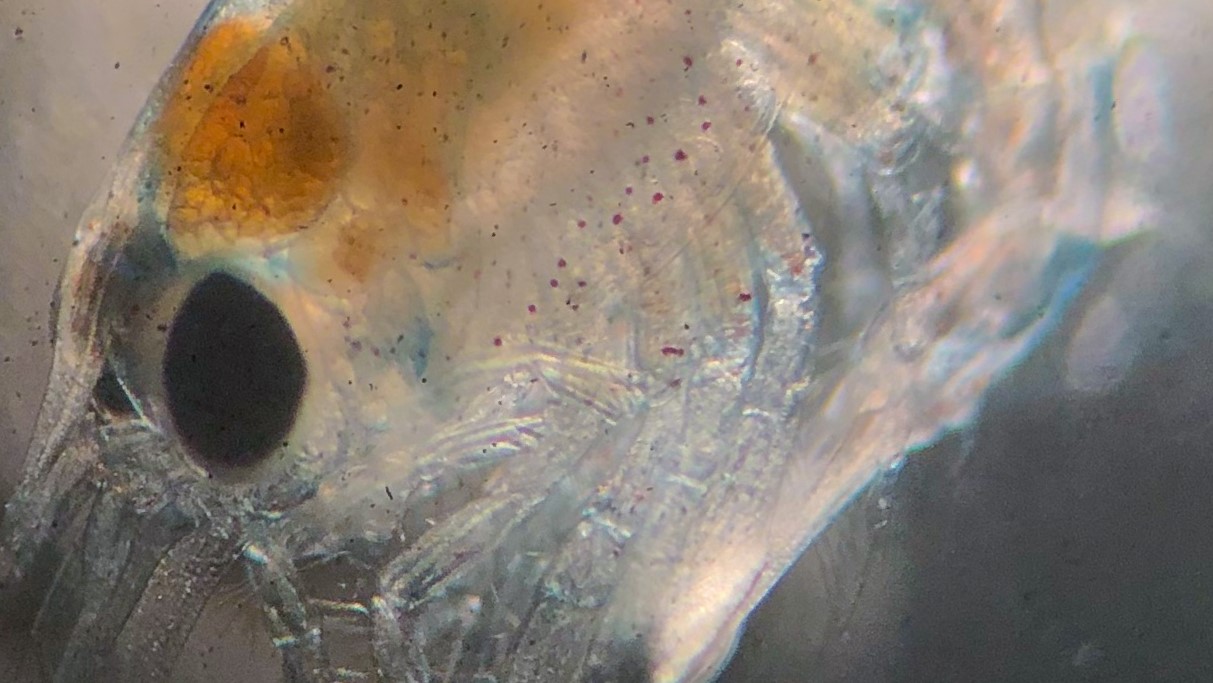
Research Spotlight: Lobster Larval Diets with Alex Ascher
By Daniel Timmermann
The ever discussed lobster begins life as a larva. A creature that is small and relatively lost in the world. Lobster larvae, in their earliest stage, struggle to even travel in one direction for any amount of time. Despite the importance of lobster in Maine and along the east coast as a whole, there are large gaps in our understanding of the animal. One of these gaps is the diet of lobster larvae.
That’s where Alex Ascher’s work on the Larval Black Box portion of the Maine-eDNA program, Maine’s current NSF EPSCoR-funded Track-1 award, comes in. Advised by Rick Wahle (UMaine Research Professor, School of Marine Sciences) and David Fields (Bigelow Laboratory for Ocean Sciences), Ascher’s research broadly looks at lobster larvae survivorship and how it relates to larval recruitment and settlement. As part of this research, Ascher examines the diet of lobster larvae using environmental DNA (eDNA) methods.
Recently in the Gulf of Maine, researchers observed a relative decrease in larval settlement. Asher explained, “Recent landings have been relatively high, meaning there are a lot of adult lobster, yet there has been a bit of a downward trend in how many baby lobsters successfully make it through their larval stage.”
In a 2018 paper by Carloni et al, a close link was identified between an abundance of the zooplankton calanus finmarchicus and an abundance of late-stage lobster larvae. Calanus as Ascher puts it are, “Basically… little tubs of butter swimming around in the ocean. So they are potentially really important food for lobster larvae.”
At the beginning of his research, Ascher relied on examining dissected larvae guts under a microscope to identify components of the larvae’s diet. The youngest larvae, stage one, can be less than a centimeter in size. This means that they are eating things smaller than them which become even smaller and ground up once consumed.
Ascher explained, “A lot of my data, when it comes to the microscopy, is essentially I know they are eating a lot of arthropods, and I know they are eating a lot of copepods, but it is really tough to get a genus. I would never decide what species is in there because I am looking at part of a limb that’s been chewed up.”
This is where eDNA enters the picture. It allows Ascher to confirm that the half-digested copepod he identified in the gut of a larva is specifically, for example, calanus. Naturally, this allows for a more detailed examination of the diet of lobster larvae.
However, using eDNA in this way did not come without its difficulties. As Ascher explained, “Diet studies in particular can be difficult because you are taking DNA that has been degraded a bit and you are also getting a lot of lobster DNA in there.” Using an established methodology, Ascher can limit the lobster DNA from amplifying using a blocker, so that he can better examine the larva’s diet. Unfortunately for Ascher, lobsters are uniquely difficult to work with because they primarily consume crustaceans which they themselves are. Their DNA is just too similar to that of their prey, thus making it difficult to be as selective as one would want.
Working with Peter Countway (Bigelow Laboratory for Ocean Sciences), they tried a number of blockers but they either did not block enough lobster DNA or they also blocked the DNA of the calanus they were looking for. Basically, they hit a wall. They finally passed this hurtle in the Spring of 2021. Their salvation lay with peptide nucleic acid (PNA) which is similar to DNA but lacks a sugar backbone. Due to PNA’s lack of a sugar backbone, it binds more efficiently to DNA. This ability of PNA allowed Ascher and Countway to be far more selective, and finally block the lobster DNA that was complicating the process.
Now that they have refined the process, Ascher is currently sending out samples to be processed and is hopeful about what this research could mean. Not only would it fill in a vital gap in our knowledge of lobsters, but if calanus is discovered to in fact be an important food source for lobster larvae, then the amount of calanus in the ecosystem could be used as a bioindicator. For his broader research on larval survivorship, Ascher says that knowing their main food source along with identifying how food limited lobster larvae are will go a long way towards better understanding larvaes’ ability to survive and become full grown lobsters.
